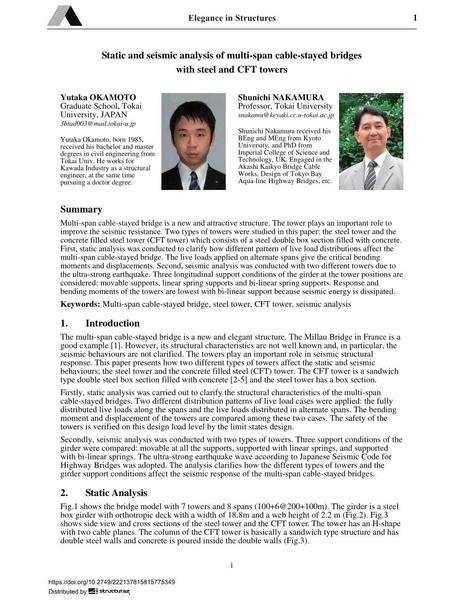Static and seismic analysis of multi-span cable-stayed bridges with steel and CFT towers

|
|
|||||||||||
Bibliographic Details
| Author(s): |
Yutaka Okamoto
Shunichi Nakamura |
||||
|---|---|---|---|---|---|
| Medium: | conference paper | ||||
| Language(s): | English | ||||
| Conference: | IABSE Conference: Elegance in structures, Nara, Japan, 13-15 May 2015 | ||||
| Published in: | IABSE Conference Nara 2015 | ||||
|
|||||
| Page(s): | 358-359 | ||||
| Total no. of pages: | 8 | ||||
| Year: | 2015 | ||||
| DOI: | 10.2749/222137815815775349 | ||||
| Abstract: |
Multi-span cable-stayed bridge is a new and attractive structure. The tower plays an important role to improve the seismic resistance. Two types of towers were studied in this paper: the steel tower and the concrete filled steel tower (CFT tower) which consists of a steel double box section filled with concrete. First, static analysis was conducted to clarify how different pattern of live load distributions affect the multi-span cable-stayed bridge. The live loads applied on alternate spans give the critical bending moments and displacements. Second, seismic analysis was conducted with two different towers due to the ultra-strong earthquake. Three longitudinal support conditions of the girder at the tower positions are considered: movable supports, linear spring supports and bi-linear spring supports. Response and bending moments of the towers are lowest with bi-linear support because seismic energy is dissipated. |
||||
| Keywords: |
seismic analysis Steel tower multi-span cable-stayed bridge CFT tower
|
||||

